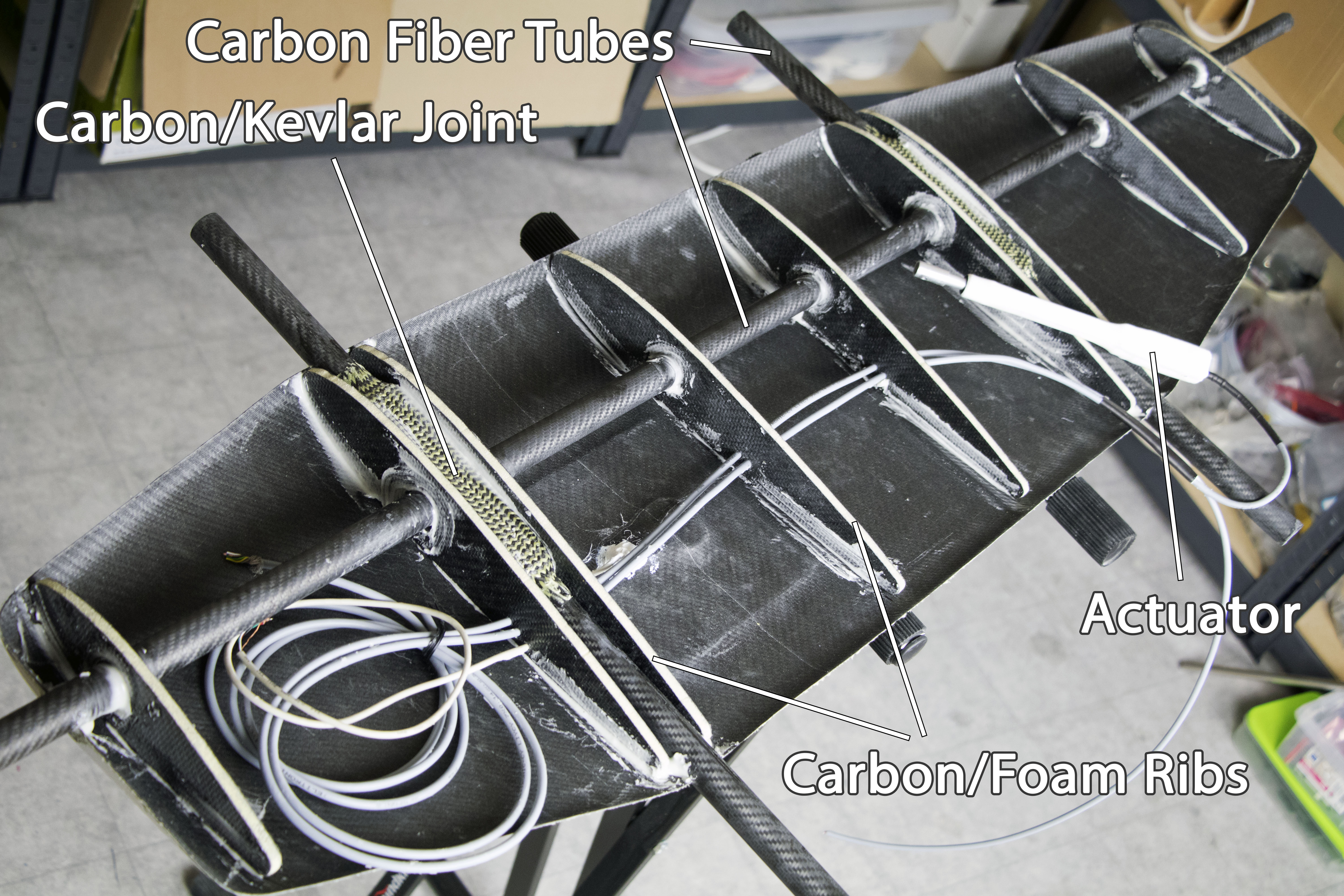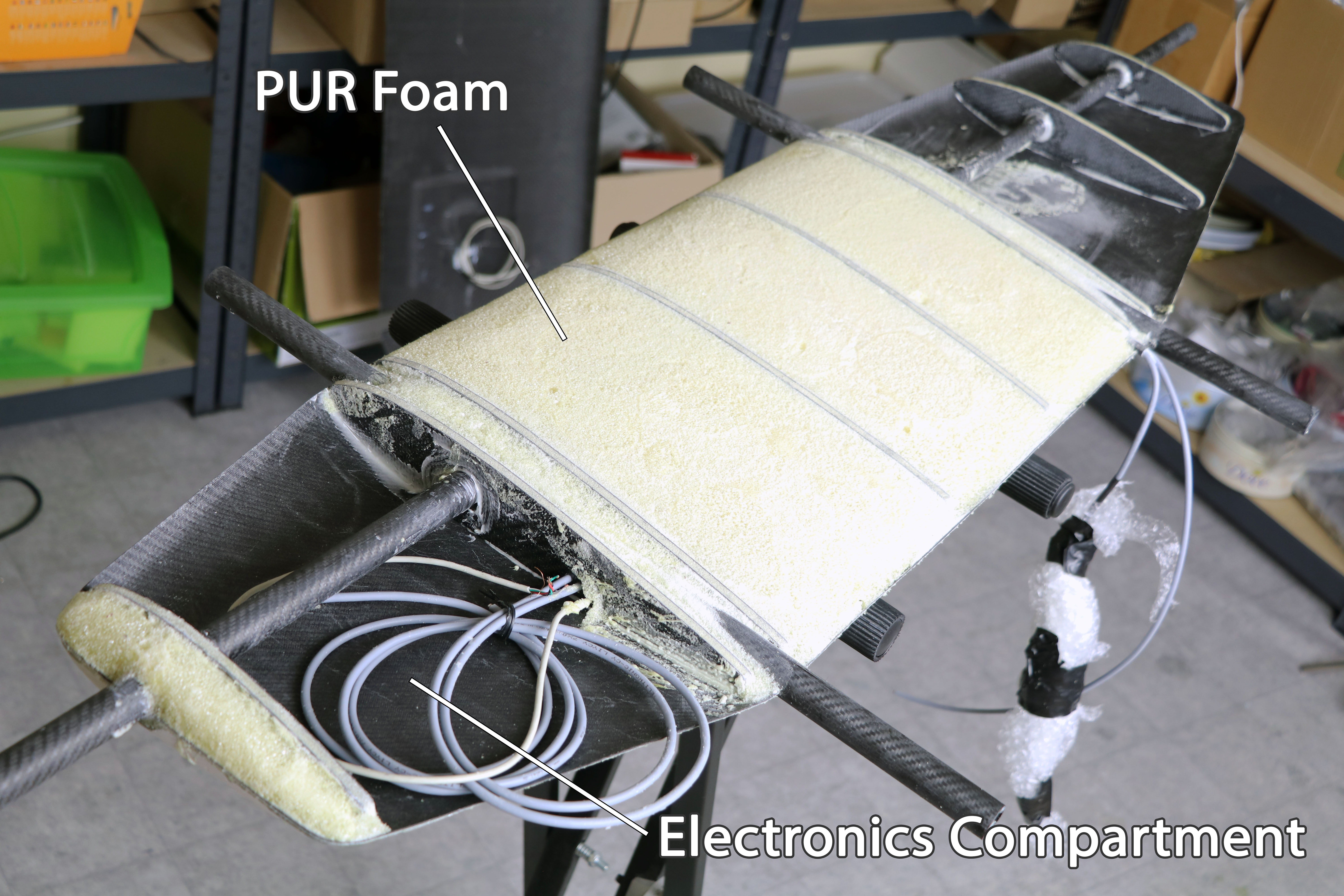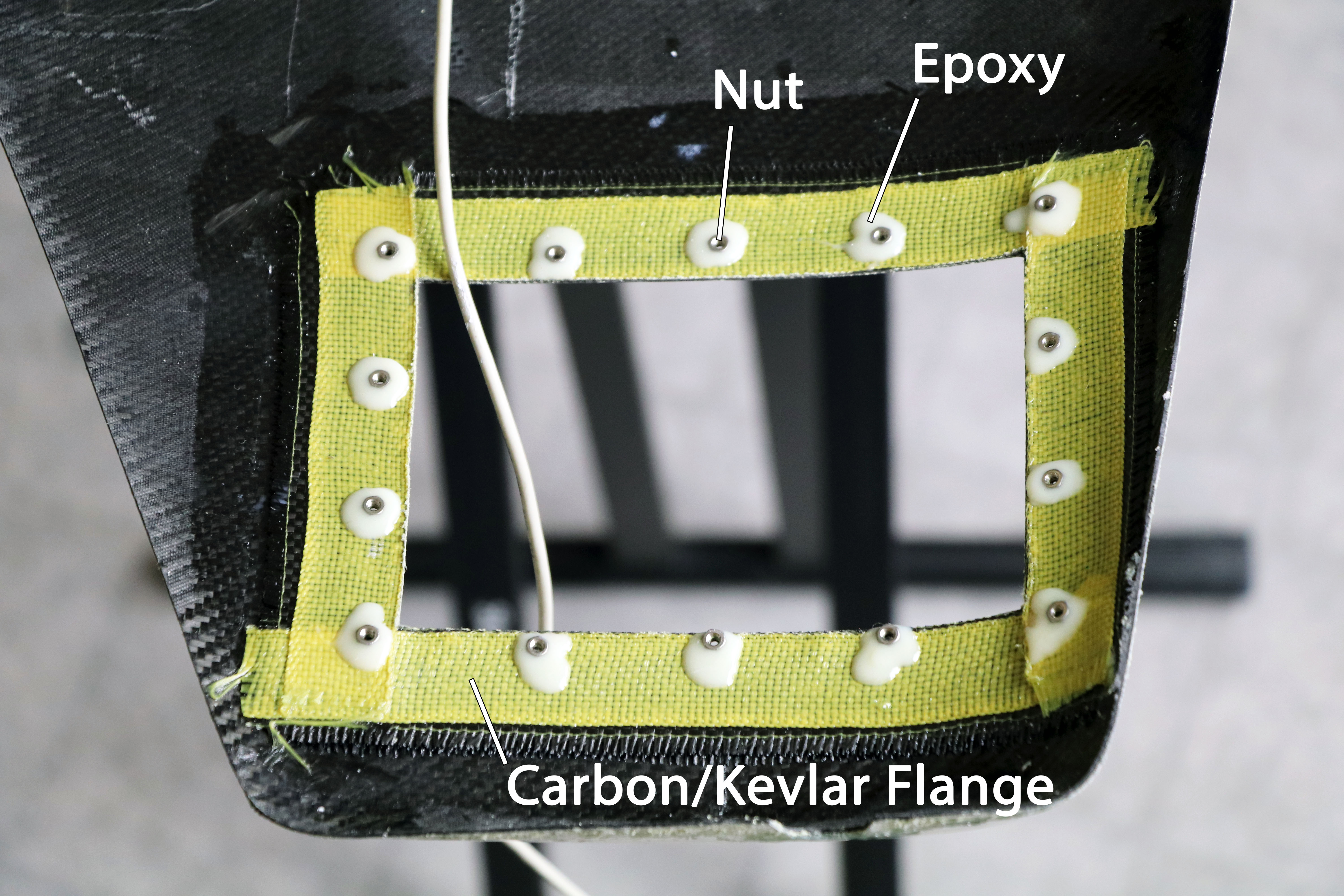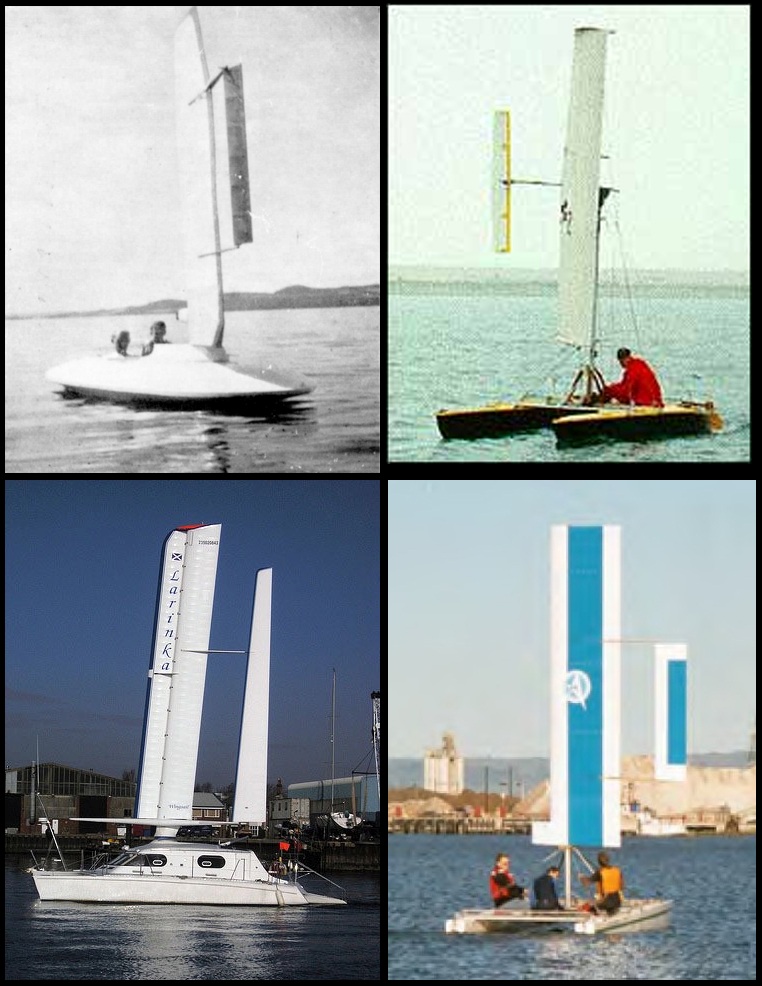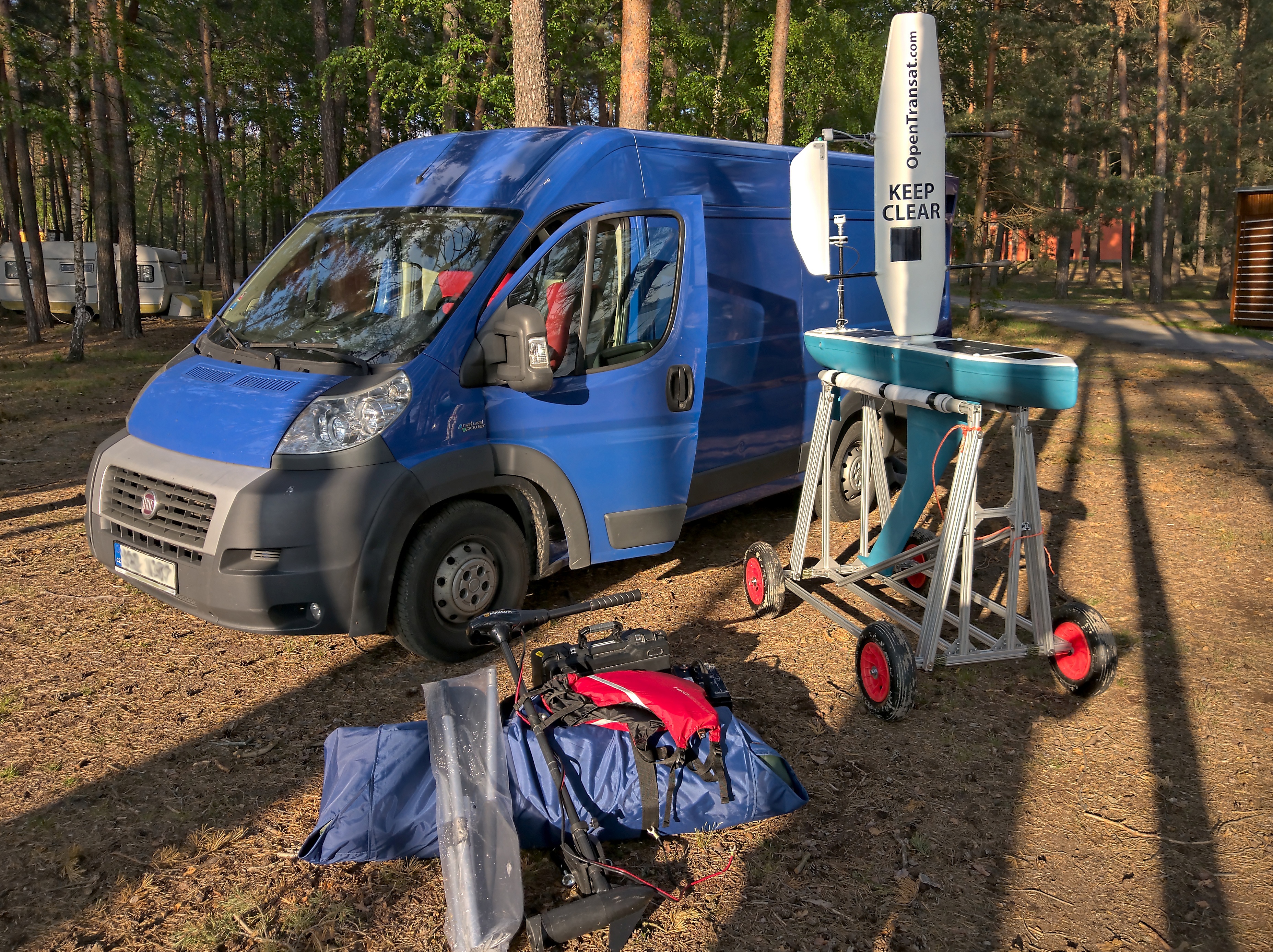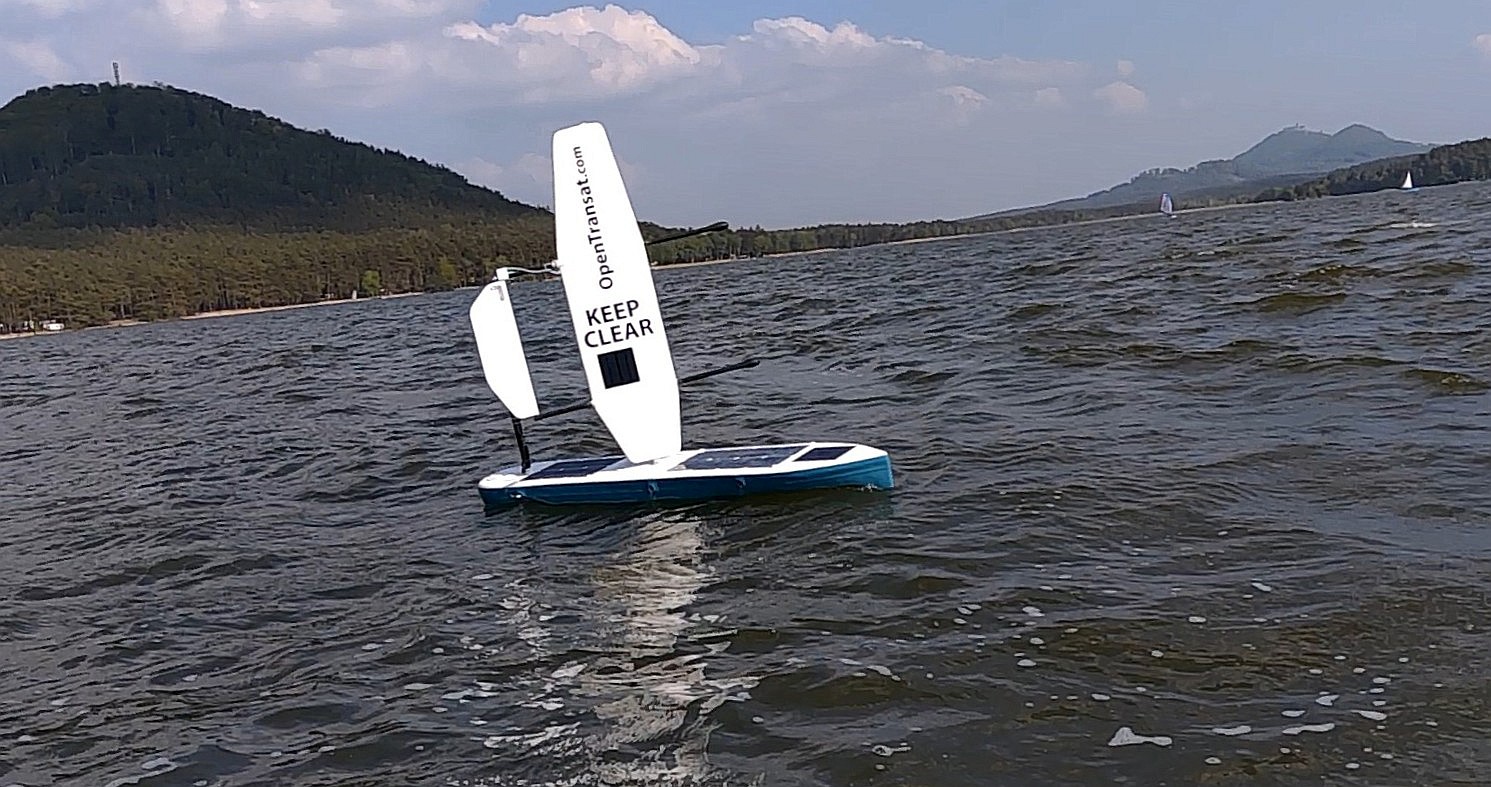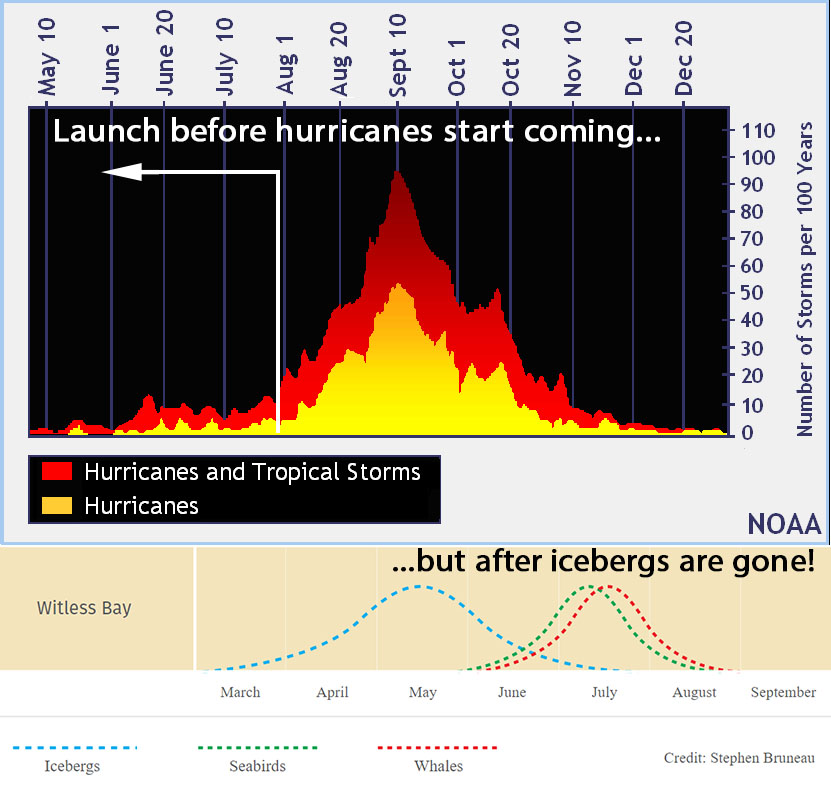The sailwing has to be lightweight and strong enough to withstand high winds and storms, but robustness comes at the expense of weight. The inner skeleton makes the sailwing very hard to bend or break.
For maximum reliability, there won’t be any electrical connection between the hull and the sailwing. The actuator will be controlled wirelessly and powered by its own batteries located inside the sailwing. I will tell you more about it in the next posts.
The carbon/foam ribs were made from a foam core wrapped with carbon fiber and cut to shape with a table saw. All the parts are glued together with epoxy putty.
The sailwing is partially filled with a closed-cell two-component polyurethane foam which improves the structural strength. I decided not to fill the upper part in order to reduce weight. The lower part provides space for the electronics that drives the actuator, i.e. batteries, solar charge controller, motor driver and wireless receiver.
This is the inner side of the second part of the sailwing. The electronics will be accessed through a waterproof hatch that will be securely mounted with screws.
